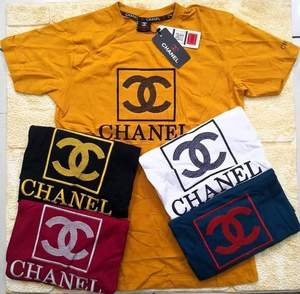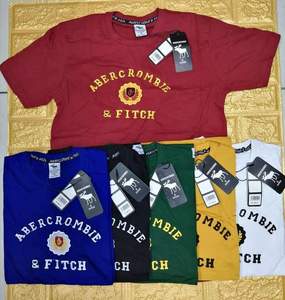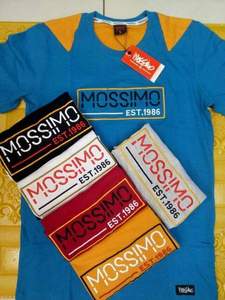
All categories
Featured selections
Trade Assurance
Buyer Central
Help Center
Get the app
Become a supplier

(938 products available)




















































There are various kinds of leftover stock goods available. These include:
Retail Inventory Surplus
Retail inventory surplus refers to the stock of goods that remains unsold after a sales period. It includes items that did not sell as expected due to various factors. These factors may include changes in consumer preferences, seasonality, or overestimation of demand. This type of leftover stock can encompass a wide range of products. For instance, it can include clothing, electronics, groceries, and household goods. Retailers may discount these surplus items to clear inventory space and recover some costs.
Seasonal Stock Leftovers
Every season, businesses stock up on products that align with holidays or weather changes. However, not all items sell out by the season's end. These are the seasonal stock leftovers. For instance, after the winter holidays, leftover stock goods may include unsold decorations, gifts, or clothing. Businesses must manage these leftovers carefully. They may offer discounts, repurpose items for sale in unrelated contexts, or donate unsold items. Leftover stock goods from seasonal sales can include food, holiday decorations, gifts, clothing, and promotional items.
Manufacturing Overruns
Manufacturing overruns occur when a factory produces more goods than ordered. This can happen due to various reasons. For instance, they may include errors in estimating production time or machine speed. These leftover stock goods can include clothing, electronics, furniture, and packaged foods. Companies may sell these surplus items at a discount to clear space and recover costs. Some businesses may also donate or recycle materials from unsold goods.
Unsold Auction Items
After every auction, some items may remain unsold. Unsold auction items may include antiques, collectibles, artwork, and more. Auction houses may discount these leftover stock goods to encourage sales. They may also offer online sales or direct sales to clear inventory. Unsold auction items can be valuable or obscure. They may require special handling or appraisal before resale. Auction houses may keep a record of unsold items for future sales opportunities.
Unwanted Gifts
Sometimes, items remain unsold after a charity event or fundraiser. These are the unwanted gifts that people do not want or need. They may include clothing, household goods, and more. Charity organizations may discount these leftover stock goods to encourage sales. They may also offer online sales or direct sales to clear inventory. Unwanted gifts can be new or gently used items. Charity organizations may keep a record of unsold items for future sales opportunities.
Designing leftover stock goods involves creating an efficient system for managing and storing products that didn't sell. Key elements include:
Inventory Management System
A robust inventory management system tracks and organizes leftover stock. It uses software to monitor stock levels, sales data, and product information. Barcodes or RFID tags identify items quickly. The system alerts users when stock is low or when items need to be rotated. It helps prioritize items that are not selling well. This ensures efficient storage and retrieval. It also aids in planning sales or donations of excess stock. Overall, it streamlines operations and minimizes waste.
Storage Solutions
These solutions are versatile and customizable to accommodate various products. They utilize vertical space with adjustable shelving units. These units can be reconfigured as needs change. Mobile racking systems allow for easy access to all items. Condensed storage maximizes space by grouping similar products. Climate control maintains optimal conditions for sensitive goods. Inventory management software tracks items and supports efficient retrieval. Barcode or RFID systems ensure accurate and quick access to stored products. Together, these elements enhance organization and accessibility in warehouses.
Product Categorization
Product categorization organizes leftover stock goods into logical groups. It starts with identifying key product attributes. These attributes may include type, brand, size, or expiration date. Stock is sorted based on these criteria. Labels are applied to shelves and bins for easy identification. Digital inventory systems are updated with categorized information. Regular audits ensure accuracy and adjust for new arrivals or sales. This system streamlines retrieval and management. It reduces time spent searching for items. It also helps identify slow-moving products more efficiently.
Condition Assessment
This process evaluates various factors. It checks for physical damage like tears, dents, or leaks. It also assesses the functionality of electronic items. Additionally, it verifies expiration dates for perishable goods. It examines packaging integrity. This ensures labels are clear and undamaged. It also checks for compliance with safety standards. Condition assessment documents findings systematically. It categorizes stock as new, used, or damaged. It also identifies hazardous materials. This process informs disposal or resale decisions. It ensures safety and compliance.
Data Documentation
Data documentation involves recording key information. It captures details about each product. This includes its name, description, quantity, and condition. Expiration dates are noted for perishable items. Photographs may be taken for visual reference. Digital spreadsheets or inventory management systems are used for organization. They allow for easy updates and retrieval. Regular audits ensure data accuracy. This process helps track stock levels and identify trends. It also supports compliance with regulations. It ensures efficient handling of leftover stock goods. It also minimizes waste.
Regulatory Compliance
Regulatory compliance ensures that leftover stock goods meet legal standards. It involves identifying relevant laws and regulations. This includes health, safety, and environmental requirements. Companies must maintain accurate records of their products. They should also label items correctly. They also need to follow proper storage and disposal guidelines. Regular audits and training help maintain compliance. Non-compliance can lead to fines, legal issues or safety risks. It also impacts business reputation and operations. Therefore, proactive management is crucial.
How to wear and match leftover stock goods depends on the type of goods that are left over. Here are some general ideas:
General Fashion Items
If someone has leftover fashion items like clothes, shoes, and accessories, they can wear them in many ways. For example, they can match a pair of jeans with a T-shirt and sneakers for a casual look or with a blouse and heels for a dressy look. They can layer a jacket or coat over a sweater or dress for warmth and style. They can accessorize with a scarf, hat, or bag to add color and texture to their outfit. The key is to mix and match different pieces and see what works best for their style and the occasion.
Seasonal Decorations
Leftover stock goods can also include seasonal decorations like wreaths, garlands, and ornaments. These can be reused each year or repurposed for different seasons and holidays. For example, a Christmas wreath can be modified with some spring flowers for an Easter decoration, or a Halloween garland can be changed with some summer leaves. They can also be combined with other decorations like candles, lights, and tablecloths to create a cohesive theme for their home.
Office Supplies
Stock goods that are leftover can also include office supplies like pens, paper, and folders. These can be organized in a drawer or a box for easy access. They can also be used to create a personalized workspace. For example, they can use different colored papers to make a vision board or a calendar. They can also use different colored pens to take notes or to write in a journal. The key is to stay organized and keep everything in its place.
Kitchenware
If someone has leftover kitchenware like plates, cups, and utensils, they can mix and match them to create a unique table setting. For example, they can pair a plain white plate with a colorful cup and a stainless steel fork. They can also use different sized plates and cups to create a layered look. Kitchenware can also be organized in a cabinet or a drawer for easy access. They can be stored vertically or horizontally depending on the space available. They can also be grouped by type or size for easy access.
Q1: What are leftover stock goods on Alibaba.com?
A1: Leftover stock goods refer to products that remain unsold after a sale or event. They can include various items, such as clothing, accessories, electronics, and more. These goods are often sold at a discount to clear inventory.
Q2: Are leftover stock goods new or used?
A2: Most leftover stock goods are new and unused. They are unsold items from retail stores or online shops. However, some may be customer returns or display items. These are usually in excellent condition.
Q3: How can one find leftover stock goods on Alibaba.com?
A3: To find leftover stock goods, users can search for relevant keywords on Alibaba.com. They can browse different categories and use filters to narrow down their search. It’s also possible to contact suppliers directly for specific requests.
Q4: Are there any risks in purchasing leftover stock goods?
A4: While most leftover stock goods are in good condition, there is always a slight risk. Buyers should check the supplier's ratings and reviews on Alibaba.com. They can also request samples or detailed photos before purchasing.
Q5: Can one sell leftover stock goods purchased from Alibaba.com?
A5: Yes, it’s possible to sell leftover stock goods. However, users must comply with local laws and regulations. They should also ensure they have the right to resell any items they purchase.